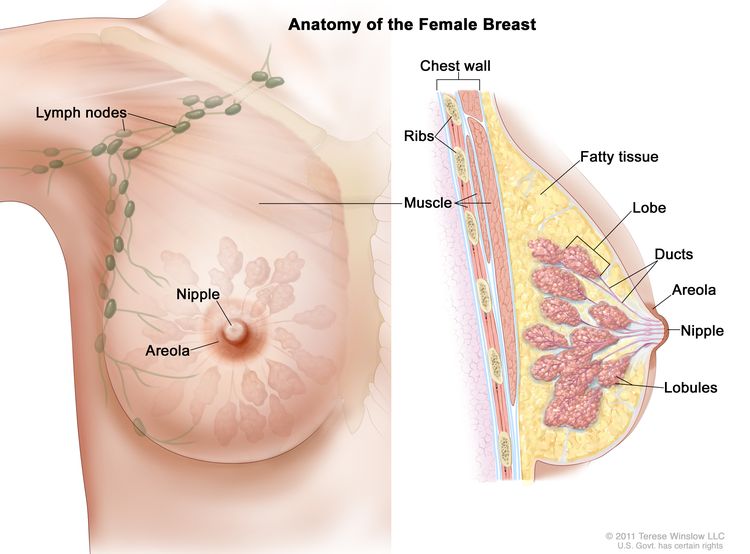Breast Cancer Treatment (Adult) (PDQ®)–Health Professional Version
General Information About Breast Cancer
This summary discusses primary epithelial breast cancers in women. The breast is rarely affected by other tumors such as lymphomas, sarcomas, or melanomas. Refer to the following PDQ summaries for more information on these cancer types:
Breast cancer also affects men and children and may occur during pregnancy, although it is rare in these populations. Refer to the following PDQ summaries for more information:
Incidence and Mortality
Estimated new cases and deaths from breast cancer (women only) in the United States in 2020:[1]
- New cases: 276,480.
- Deaths: 42,170.
Breast cancer is the most common noncutaneous cancer in U.S. women, with an estimated 48,530 cases of female breast ductal carcinoma in situ and 276,480 cases of invasive disease in 2020.[1] Thus, fewer than one of six women diagnosed with breast cancer die of the disease. By comparison, it is estimated that about 63,220 American women will die of lung cancer in 2020.[1] Men account for 1% of breast cancer cases and breast cancer deaths (refer to the Special Populations section in the PDQ summary on Breast Cancer Screening for more information).
Widespread adoption of screening increases breast cancer incidence in a given population and changes the characteristics of cancers detected, with increased incidence of lower-risk cancers, premalignant lesions, and ductal carcinoma in situ (DCIS). (Refer to the Ductal carcinoma in situ [DCIS] section in the Pathologic Evaluation of Breast Tissue section in the PDQ summary on Breast Cancer Screening for more information.) Population studies from the United States [2] and the United Kingdom [3] demonstrate an increase in DCIS and invasive breast cancer incidence since the 1970s, attributable to the widespread adoption of both postmenopausal hormone therapy and screening mammography. In the last decade, women have refrained from using postmenopausal hormones, and breast cancer incidence has declined, but not to the levels seen before the widespread use of screening mammography.[4]
Anatomy























.png)











No hay comentarios:
Publicar un comentario